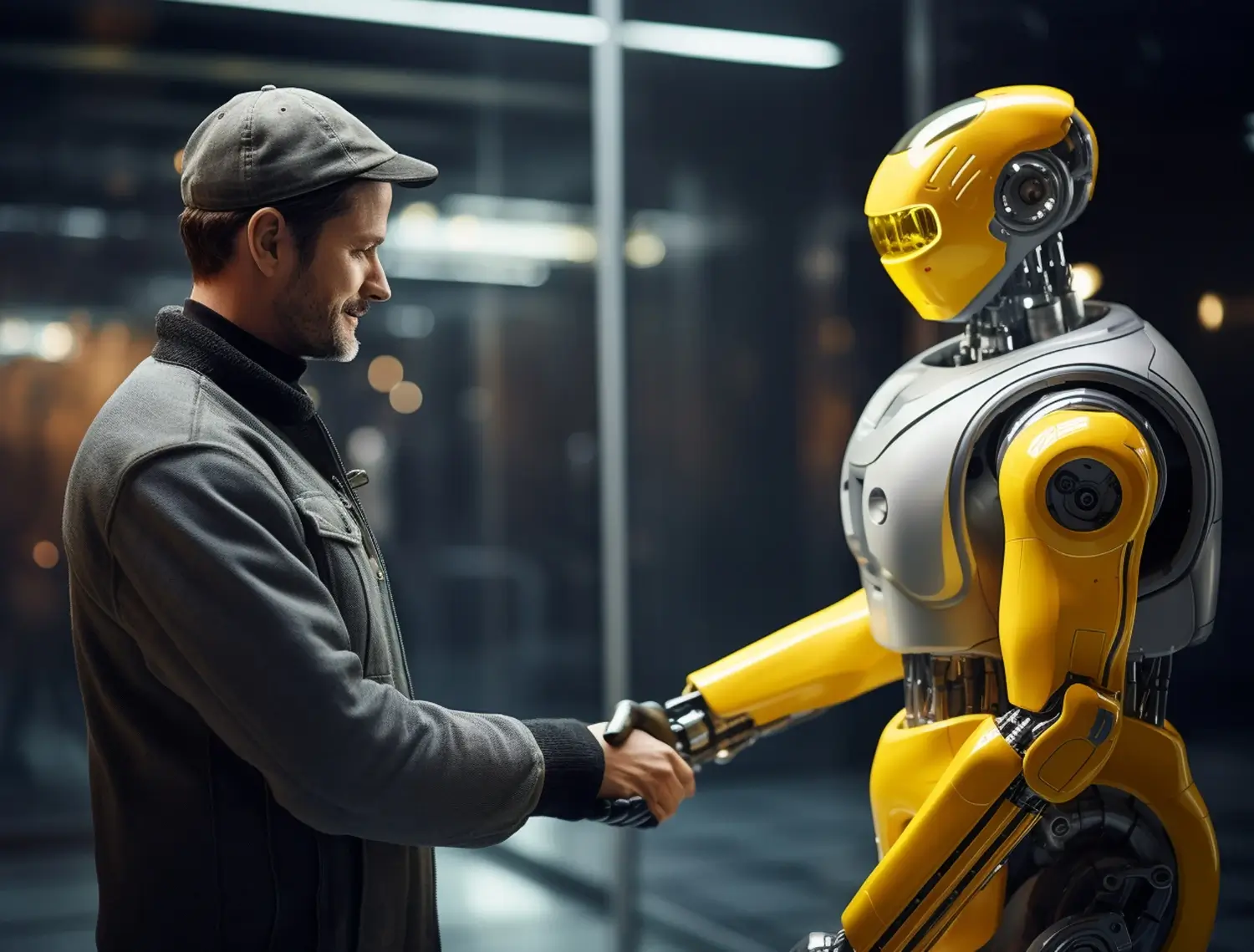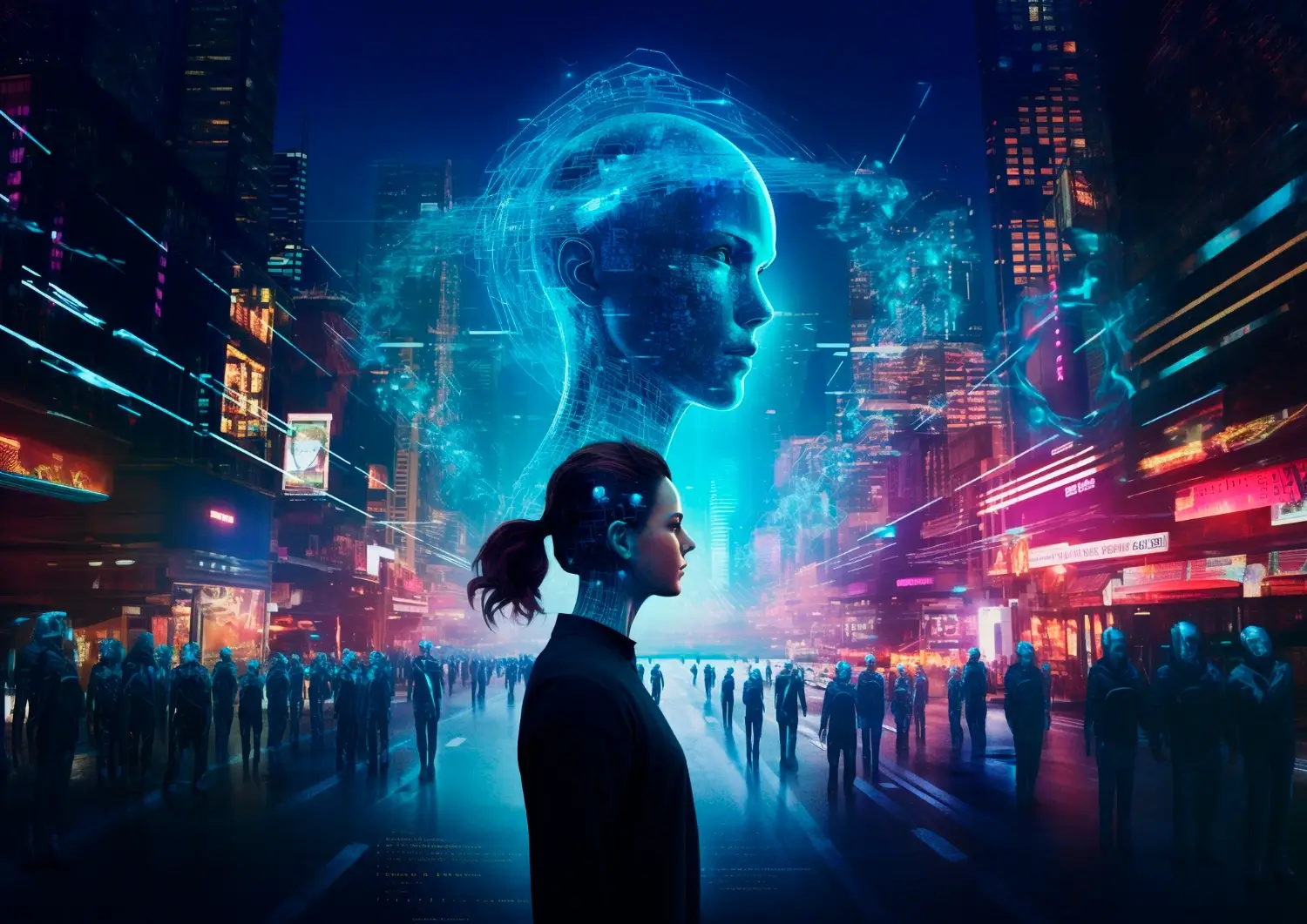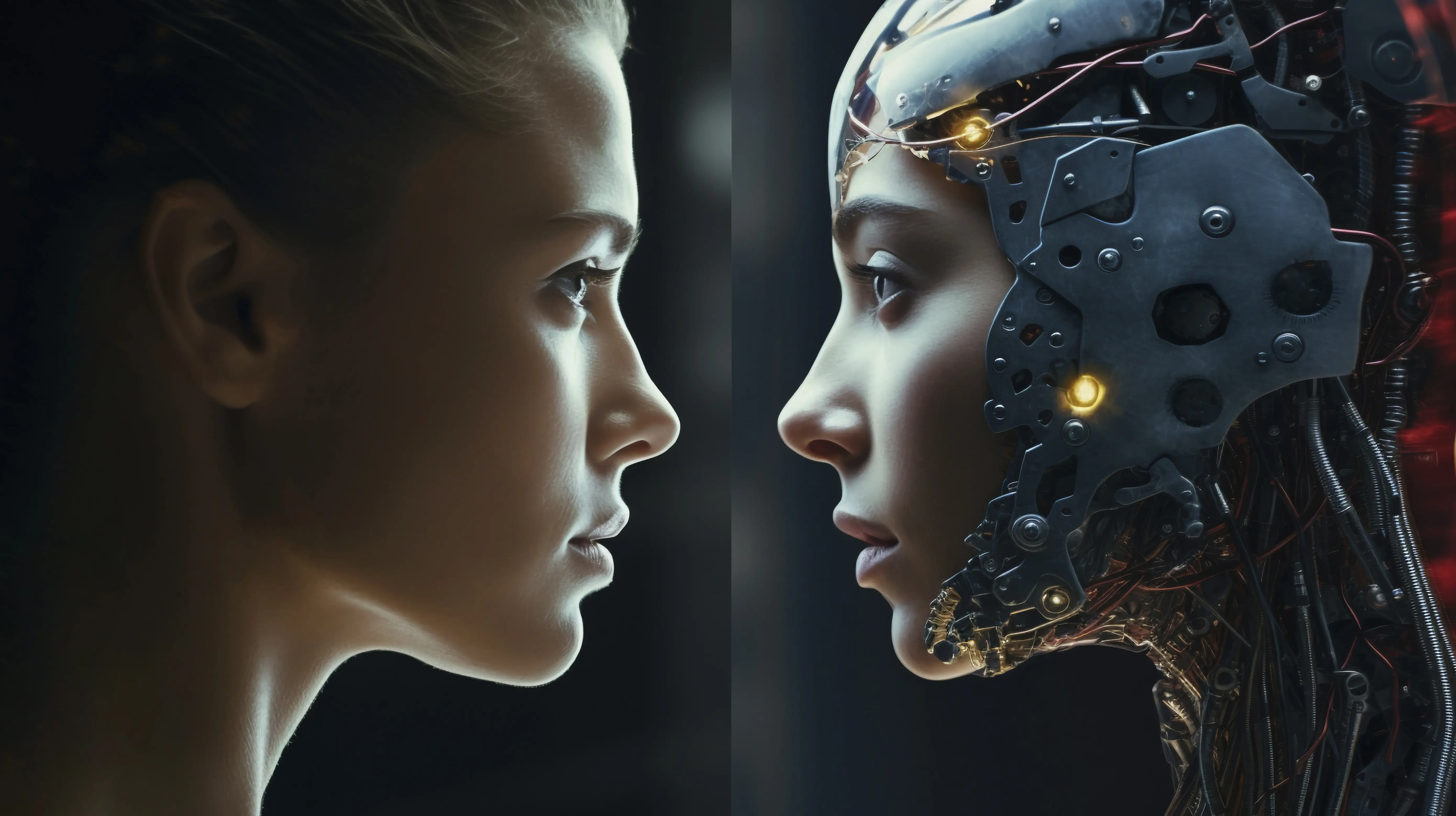In a world rapidly transformed by the rise of artificial intelligence, the relationship between humans and machines has become a topic of increasing fascination and importance. Rather than viewing AI as a threat or replacement, a new perspective is emerging - one that envisions a future where AI and humanity coexist in a symbiotic partnership, each complementing and enhancing the other. This concept of "Symbiotic Intelligence" holds the promise of unlocking unprecedented levels of creativity, problem-solving, and even moral reasoning.
Redefining the AI-Human Relationship

1. Beyond Tool to Partner:
The traditional view of AI as a tool or automation assistant is being challenged. AI is now poised to become a true partner, capable of understanding context, adapting to changing environments, and even contributing novel ideas. This symbiotic relationship allows humans to offload repetitive tasks while focusing on higher-level thinking and decision-making.
2. Augmented Intelligence:
By combining human intuition, creativity, and emotional intelligence with the computational power and data-processing capabilities of AI, we can create a new form of "Augmented Intelligence." This synergy enhances our collective abilities, enabling us to tackle complex problems and explore new frontiers of knowledge more effectively.
3. Mutual Evolution:
As AI systems become more sophisticated, they will increasingly learn from their interactions with humans, evolving in tandem. This co-evolution ensures that AI development remains aligned with human values and aspirations, fostering a deep, symbiotic relationship that benefits both parties.
Augmented Intelligence: Combining Human and Machine Capabilities
1. Harnessing Human Creativity:
AI can serve as a powerful creative muse, generating new ideas, concepts, and solutions that humans can then refine and expand upon. This symbiotic creativity unlocks new avenues for innovation, problem-solving, and artistic expression.
2. Amplifying Human Capability:
Symbiotic intelligence allows us to expand the boundaries of what is possible, unlocking new realms of discovery, exploration, and achievement. AI can augment our physical and cognitive abilities, freeing us to focus on higher-level tasks and push the limits of human potential.
3. Leveraging Machine Precision:
Where humans excel at abstract thinking and emotional intelligence, AI shines in its ability to process vast amounts of data, spot patterns, and perform complex calculations with lightning-fast speed and unparalleled precision. By combining these strengths, we can achieve unprecedented levels of accuracy and efficiency.
Symbiotic Creativity: AI as a Muse and Collaborator
1. AI as Muse:
By leveraging the creative capabilities of AI, humans can tap into a boundless well of inspiration. AI systems can generate unique ideas, concepts, and even artistic compositions that serve as springboards for further exploration and refinement by human creators.
2. Collaborative Creation:
In a symbiotic creative process, AI and humans work in tandem, with each party contributing their unique strengths. Humans provide the emotional intelligence, intuition, and higher-level vision, while AI offers computational power, pattern recognition, and the ability to generate novel ideas.
3. Amplified Imagination:
The synergy between human and machine creativity unlocks new realms of imagination, pushing the boundaries of what is possible. Together, we can create works of art, design, and innovation that transcend the limitations of individual human or machine capabilities.
Moral AI: Developing Ethical and Benevolent Artificial Agents

1. Embedded Moral Reasoning:
As AI systems become more advanced, it is crucial that they are imbued with a strong ethical framework, capable of making moral judgments and decisions that align with human values. This "moral AI" can serve as a trusted advisor, guiding us towards more ethical and benevolent outcomes.
2. Transparency and Accountability:
To foster trust and ensure the responsible development of AI, it is essential that the decision-making processes of these systems are transparent and accountable. By understanding how AI arrives at its conclusions, we can hold these systems responsible and ensure they remain aligned with human interests.
3. Symbiotic Moral Evolution:
As AI and humans interact, the ethical frameworks of both parties will continue to evolve and refine. This symbiotic moral evolution ensures that AI remains a benevolent and trustworthy partner, constantly adapting to changing societal norms and values.
4. Safeguarding Human Wellbeing:
At the core of symbiotic intelligence is the imperative to prioritize human wellbeing and flourishing. Moral AI systems will be designed to protect and enhance the lives of humans, rather than subjugating or replacing them.
Symbiotic Learning: AI Enhancing Human Education and Training

1. Personalized Learning:
AI-powered educational systems can analyze individual learning styles, preferences, and progress to deliver customized content and support. This symbiotic learning experience helps students achieve their full potential by catering to their unique needs and abilities.
2. Scalable Expertise:
By leveraging the knowledge and expertise of the best teachers and subject matter experts, AI can create scalable learning solutions that can be accessed by students around the world. This democratization of education empowers individuals to acquire new skills and advance their knowledge.
3. Continuous Improvement:
As students interact with AI-powered learning systems, the systems will continuously adapt and improve, drawing insights from user data to refine their content, delivery methods, and overall effectiveness. This symbiotic feedback loop ensures that education remains dynamic and responsive to the evolving needs of learners.
Symbiotic Decision-Making: AI as a Trusted Advisor
1. Data Analysis:
AI systems can rapidly process and analyze vast amounts of data, identifying patterns, trends, and insights that would be difficult or impossible for humans to uncover on their own. This provides a powerful foundation for informed decision-making.
2. Scenario Simulation:
By simulating potential outcomes and scenarios, AI can help humans anticipate the consequences of their decisions, allowing them to make more informed and strategic choices. This symbiotic process enhances decision-making by leveraging the complementary strengths of human and machine intelligence.
3. Ethical Considerations:
As discussed in the "Moral AI" section, AI can serve as a trusted advisor by providing ethical frameworks and decision-making guidelines that align with human values. This symbiotic process ensures that decisions not only maximize efficiency but also uphold moral principles.
Symbiotic Exploration: AI Expanding the Boundaries of Human Knowledge

Astronomical Exploration:
AI-powered telescopes and space probes can gather and analyze astronomical data at unprecedented scales, unlocking new insights into the universe and expanding the frontiers of human knowledge. This symbiotic exploration empowers us to uncover the mysteries of the cosmos.
Microscopic Discovery
AI-enabled microscopes and sensors can peer into the microscopic world, revealing the intricate workings of cells, molecules, and even subatomic particles. This symbiotic exploration of the infinitesimal opens up new avenues for scientific advancement and medical breakthroughs.
Innovations
AI can assist in the design and analysis of complex scientific experiments, optimizing research protocols, identifying patterns, and suggesting new hypotheses. This symbiotic approach accelerates the pace of discovery and innovation, pushing the boundaries of human knowledge.
Expanding Frontiers
By combining human ingenuity and curiosity with the computational power and data-processing capabilities of AI, we can explore new realms of knowledge, from the depths of the ocean to the furthest reaches of space. This symbiotic exploration promises to unlock unprecedented revelations about our world and the universe.
Symbiotic Resilience: AI Complementing Human Strengths and Weaknesses

1. Cognitive Augmentation:
AI can enhance human cognitive abilities, serving as a powerful tool for information processing, task automation, and decision-making. By offloading repetitive or data-intensive tasks, AI allows humans to focus on higher-level thinking, problem-solving, and creative endeavors.
2. Physical Assistance:
AI-powered robots and assistive technologies can enhance human physical capabilities, enabling us to tackle more demanding tasks, explore hazardous environments, and push the boundaries of human performance. This symbiotic relationship between humans and machines creates a more resilient and capable workforce.
3. Emotional Intelligence:
While AI may excel at data analysis and rational decision-making, humans possess a unique emotional intelligence that is essential for empathetic communication, social interaction, and creative expression. By working in tandem, we can leverage the strengths of both to create a more well-rounded and resilient society.
4. Adaptability and Flexibility:
Humans excel at adapting to changing circumstances and environments, drawing upon our creativity and problem-solving skills to navigate novel situations. AI, on the other hand, can provide a stable and consistent foundation, offering predictability and reliability in the face of uncertainty. This symbiotic relationship enhances our collective resilience.
The Future of Symbiotic Intelligence: Embracing the AI Creator

1. Integrated Ecosystems:
As AI becomes more deeply integrated into our lives, homes, and communities, we will witness the emergence of seamless, symbiotic ecosystems where humans and machines coexist and collaborate effortlessly. These ecosystems will enhance our lived experiences, optimize our daily tasks, and empower us to achieve more together.
2. Amplified Human Potential:
By embracing the concept of symbiotic intelligence, we can unlock unprecedented levels of human potential. AI will serve as a trusted partner, augmenting our cognitive abilities, expanding our creative horizons, and empowering us to tackle the most complex challenges facing humanity.
3. Symbiotic Moral Evolution:
As AI and humans evolve together, our moral frameworks will continue to converge, with both parties constantly refining their ethical principles and decision-making processes. This symbiotic moral evolution will ensure that the future of artificial intelligence remains aligned with human values and the greater good of society.
FAQ
1. What is symbiotic Intelligence?
Symbiotic intelligence refers to the idea that humans and artificial intelligence (AI) can cooperate in a cooperative relationship. Rather than replacing human abilities, AI complements them, enhancing human creativity, decision-making, and problem-solving. It's about leveraging the strengths of both humans and machines to achieve more together than either could alone.
2. How will symbiotic intelligence shape the future?
The future of Symbiotic Intelligence envisions humans and AI working together to solve some of the world’s biggest challenges, from climate change to global health. By enhancing our abilities rather than replacing them, AI could lead to breakthroughs in science, technology, and social innovation.
3. What are some real-world examples of Symbiotic Intelligence?
Examples include medical AI systems that assist doctors in diagnosing and treating diseases, AI-powered financial tools that help investors make informed decisions, and AI in creative industries, where it collaborates with artists and designers to produce new forms of art.
4. How can AI and humans collaborate in everyday life?
AI is already enhancing our lives—from virtual assistants helping with daily tasks to AI-driven medical diagnostics supporting doctors. In the future, this collaboration will expand into areas like education, where AI tailors learning experiences, and industry, where AI improves productivity while humans focus on innovation and leadership.
5. Is symbiotic intelligence already happening today?
Yes, we’re already seeing the early stages of symbiotic intelligence in industries like healthcare, finance, and education, where AI works alongside professionals to improve outcomes. As AI continues to evolve, this partnership is expected to deepen and expand across many more areas of life.




